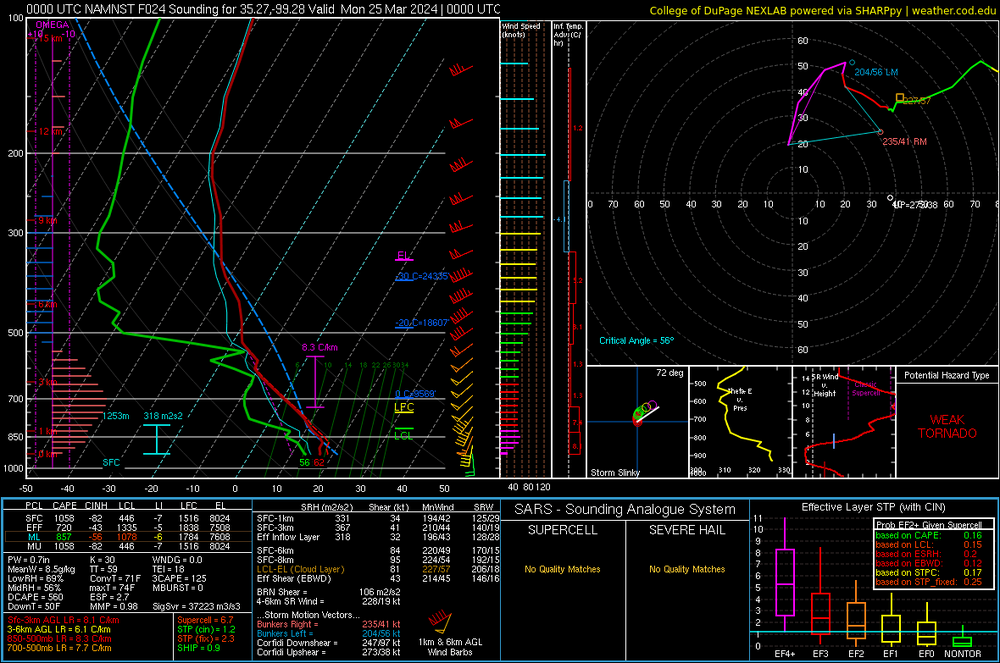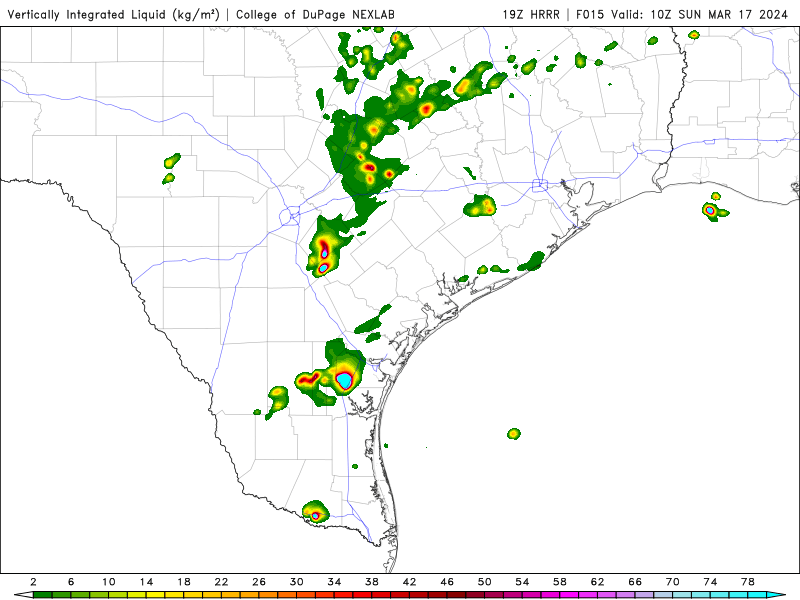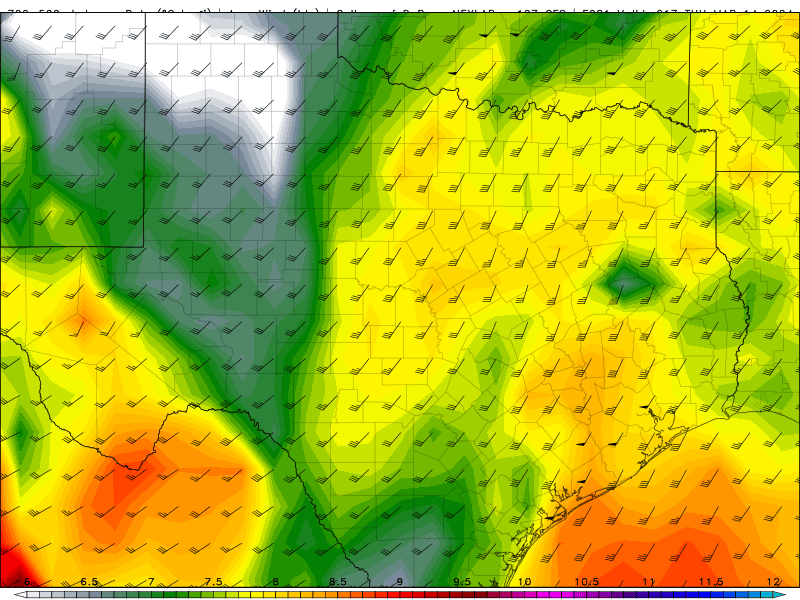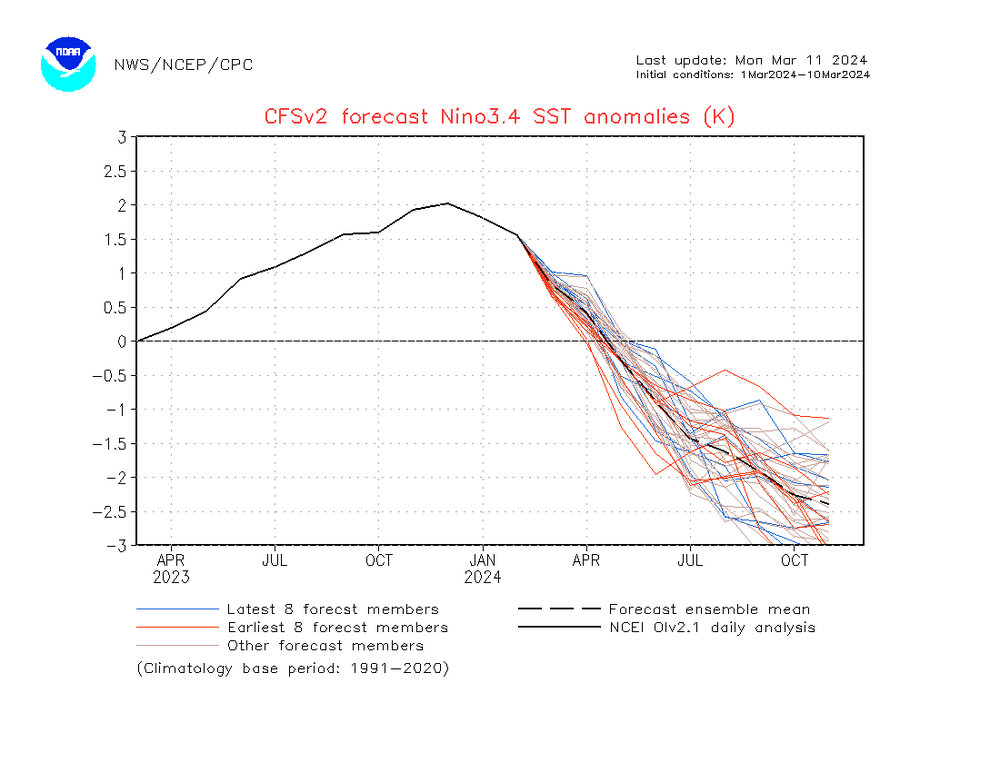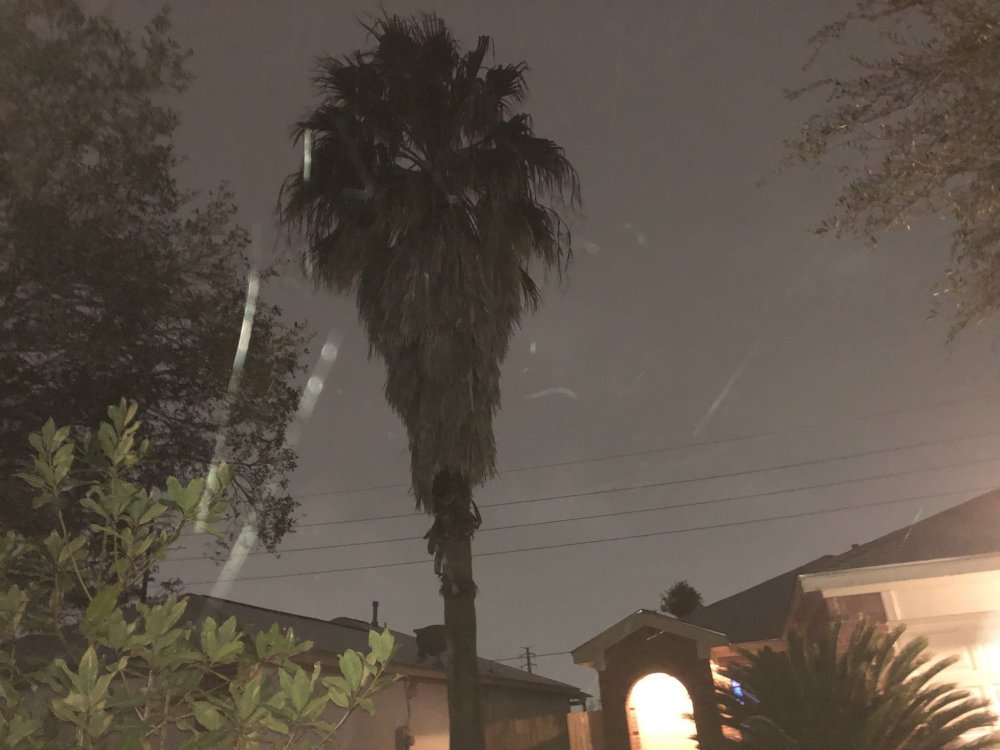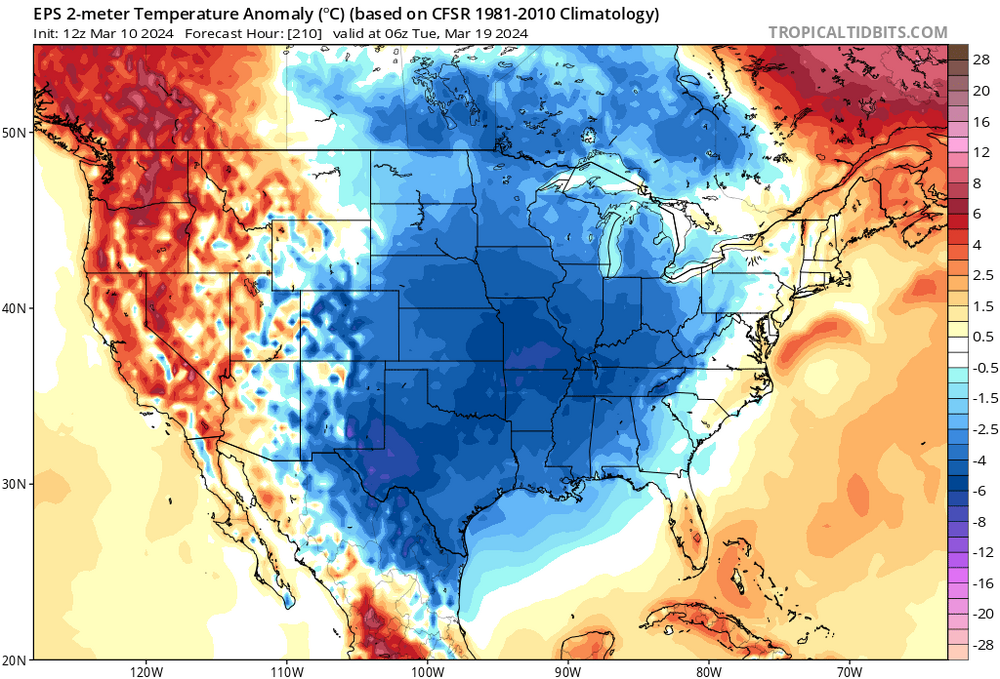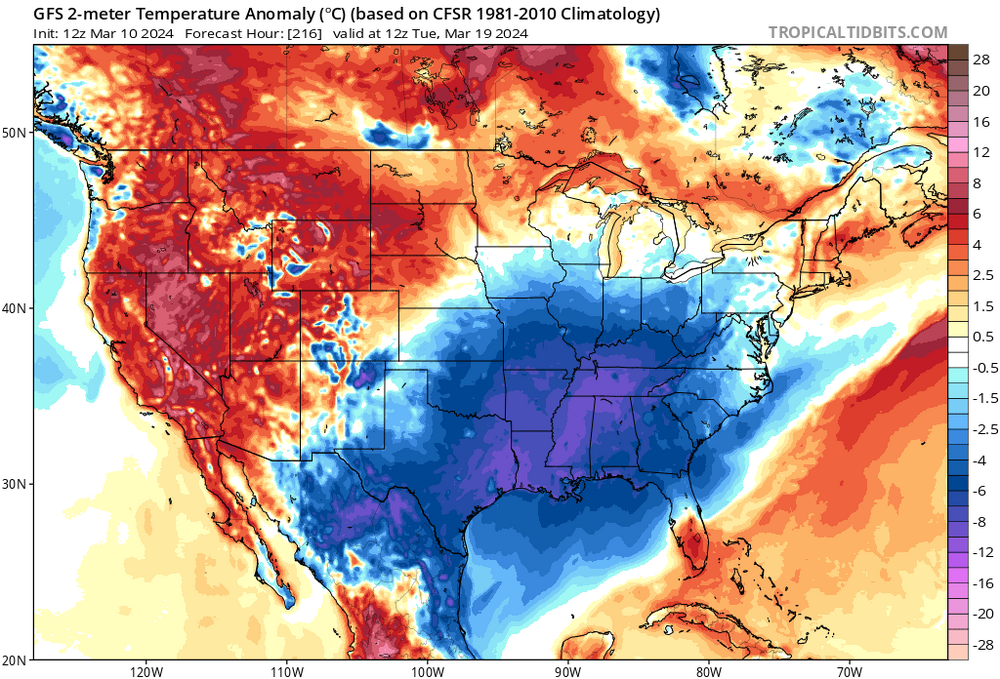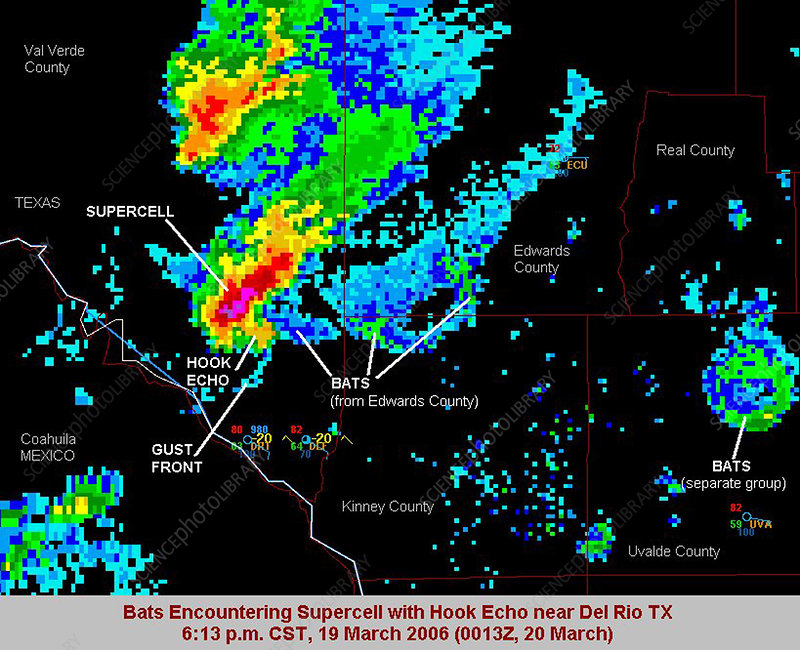-
Posts
2,133 -
Joined
-
Last visited
Content Type
Profiles
Blogs
Forums
American Weather
Media Demo
Store
Gallery
Everything posted by Ed, snow and hurricane fan
-
I'm guessing I'm not the first person on the board who started watching the videos, but YouTube somehow knew to suggest Convective Chronicles. Tropical Tidbit style discussions of ongoing events, and 45 minute post-mortems of significant tornado events of the last 30 years. On Twitter/X and YouTube.
-

Severe Weather 3-24-24 and 3-25-24
Ed, snow and hurricane fan replied to cheese007's topic in Central/Western States
Not hatched for large hail, but enhanced risk for hail probs >30% w/i 25 miles for a small part of N Central Oklahoma and S central Kansas on updated SWODY1 -

Severe Weather 3-24-24 and 3-25-24
Ed, snow and hurricane fan replied to cheese007's topic in Central/Western States
Sunday looks more like a day for chasing hail and structures. Surface based CAPE is fairly low, surface CINH is fairly high. Maybe W. Oklahoma might see a tornado or two, if I had to guess.. Impressive ML lapse rates though, and there is enough plenty of shear. Looking at Day 2 area HRRR and 3 and 12 km NAM, a squall line with gusty winds seems more likely judging my simulated radar, although there is some surface based instability and a lot of low level shear. Maybe embedded in a line, or a cell ahead of the main line. -

Texas 2024 Discussion/Observations
Ed, snow and hurricane fan replied to Stx_Thunder's topic in Central/Western States
In a severe warning at 6:30, fair amount of lightning but no hail or strong winds. No warnings but impressive line segment NW of San Antonio currently. -

Severe Weather 3-13 through 3-16-24
Ed, snow and hurricane fan replied to cheese007's topic in Central/Western States
I was staying about 10 miles S of the supercell Thursday. I watched it developing when I was doing the tourist FTW Stockyards, and their cattle drive of 10 or 12 longhorns who were clearly sedated. -

Severe Weather 3-13 through 3-16-24
Ed, snow and hurricane fan replied to cheese007's topic in Central/Western States
I haven't seen VIL used as a large hail proxy in a while, but latest HRRR would seem to be dropping big hail with a deviant right turner towards Kingsville, where I have partied with college students from the local branch of the ag college. 3 km NAM in general agreement of generally calm until what I assume is a shortwave crossed the Rio Grande into South Texas around midnight. It might have been the Texas thread, but I commented to @Stx_Thunder that while Deep South Texas doesn't have the North Texas/Big Country/Panhandle reputation, it can have the occasional 'gorilla hail', that would get more attention if the population density away from the border towns was higher. Tonight might be one of those events. -

Total Solar Eclipse, April 8, 2024
Ed, snow and hurricane fan replied to wxsniss's topic in New England
Billboards on I-45 in Corsicana, a third of the way before DFW and Houston advertising the eclipse. Not sure that would be a destination. San Antonio and Austin probably have the most other tourist-y things to do in full eclipse areas of Texas. I'll be working and will not be allowed to go outside, except maybe for a three minute break. -

Severe Weather 3-13 through 3-16-24
Ed, snow and hurricane fan replied to cheese007's topic in Central/Western States
Visiting family in HEB area of DFW. Expecting storms to fire pretty much overhead late afternoon and mature as they move E past us. 3km NAM shows >4000 J/Kg MLCAPE just E of here. I expect the storms to mature quickly, updraft helicity after storm initiation down here less impressive than I'd have expected. If I see anything cool, I'll snap storms to the E lit by the early evening light and post them. -

Severe Weather 3-13 through 3-16-24
Ed, snow and hurricane fan replied to cheese007's topic in Central/Western States
80% SPC watch probs NE Kansas and NW Missouri. By NE Kansas, I mean not just a corner, meso bubble almost to Hays. -

2024-2025 La Nina
Ed, snow and hurricane fan replied to George001's topic in Weather Forecasting and Discussion
This year was weird for a hard freeze (although it was brief, it did produce enough ice to cancel school HOU area), El Nino's are usually cooler, but the hard freezes seem to favor La Nina. 3 hard freezes IAH (below 20F) in 4 years is unusual. Also IMBY-ish, 2010 (only year of more active hurricane era) was quite active, although no mainland North America landfalls, although Igor (not counted, post-tropical) and Tomas (Caribbean) were retired after the season. (I didn't memorize, I Googled). -

Severe Weather 3-13 through 3-16-24
Ed, snow and hurricane fan replied to cheese007's topic in Central/Western States
Cap almost holds, but does break and STP(cin- MLCAPE higher than SBCAPE) almost 5 per 3km NAM just N of MCI tomorrow evening. My BIL is coming down to DFW from MCI tomorrow. SWODY 2 has hatched hail, not hatched tornadoes MKC area. Thursday's SPC Southern Sig Severe looks more conditional, HRRR breaks cap near DFW, NAMs not so much. Driving to Euless tomorrow. FV# may be showing a supercell with a couple of hooks (maybe my imagination) a couple of counties NE of DFW Thursday late. We decided not to rent a car. My brother and my sister in-law will be safer in DFW. Re-SWODY2's next update as SWODY1, I suspect Sig Severe for tornadoes as well as the existing one for NE Kansas. -

Texas 2024 Discussion/Observations
Ed, snow and hurricane fan replied to Stx_Thunder's topic in Central/Western States
Good instability, the NAMs show a pretty stout cap. -

Severe Weather 3-13 through 3-16-24
Ed, snow and hurricane fan replied to cheese007's topic in Central/Western States
Now a Day 4 15% risk in a similar area. NWS FWD awaits the event moving into the range of the hi-res models. ~40 knots deep shear, which is enough with a forecast near 2500 J/Kg MLCAPE and near 8 C/Kg mid level lapse rates (producing almost 60 TT) but low level shear only about 10 knots probably means not a giant tornado threat. Which is what NWS said. Not good news, we're going to Euless to visit my Mom, 90 years old. May suggest a rental car to my wife. We leave Wednesday, which will be in range of hi-res models. -

2024-2025 La Nina
Ed, snow and hurricane fan replied to George001's topic in Weather Forecasting and Discussion
-

Texas Winter 2021
Ed, snow and hurricane fan replied to It's Always Sunny's topic in Central/Western States
A lot of palms died from the 3 hard freezes in four years, but the big palm, one seedling I transplanted a couple of years ago, and many of the little ones that pop up in the garden like weeds survived this years hard freeze. The banana plants look dead, but they do that every year with a frost and always come back from the roots. -

Texas 2024 Discussion/Observations
Ed, snow and hurricane fan replied to Stx_Thunder's topic in Central/Western States
GFS and Euro ensembles are singing the same song. Not like I was calling for a snow storm 8 days out. -

Texas 2024 Discussion/Observations
Ed, snow and hurricane fan replied to Stx_Thunder's topic in Central/Western States
Winter returns in a week. Not cold enough for anything fun, just cold. I'd expect to have warm stretches in March w/ daytime highs AOA 80F, and after this week, I don't see it. May see some severe N of here Thursday and Friday, but I don't see enough warmth for anything after that. -

March 7th-9th, 2024 Severe Weather
Ed, snow and hurricane fan replied to cheese007's topic in Central/Western States
Looking at Euro 24 hour precip Friday, there will be storms that track just N of us. It looks better than the GFS for some needed rainfall but still showing SW flow in the 850-700 mb levels. I fear a dry Spring leading to the feedback that produces another 2 months plus of 100F temps around here. I think Euro's 250 mb RR entrance may be helping overcome a bit of the CINH, it would be nice if that whole thing edges a smidge S for better jet support. In your neck of the woods, I'm waiting for the under forecasted severe storms that form over the mountains in Mexico and drift across the river in the evening. I've seen pictures of big hail and damage from those storms. And there is actually more than 1 image of the net of the bats in the W Hill Country getting ingested into supercells. I found out they live under bridges in Houston as well after the last hard freeze stunned many, living in Austin late 80s/early 90s, I thought the bridge bats were unique to there. -
Not most recent but 3km NAM shows ice starting to accumulate inland, at end of run.
-
Thoughts on interior ice accumulations? Euro has been suggesting it for several days.
-

2024-2025 La Nina
Ed, snow and hurricane fan replied to George001's topic in Weather Forecasting and Discussion
I assume NOAA is just the one US agency, ensemble is the average strength by other US private and international climate observation organizations plus NOAA. I could be wrong, but it makes sense. -

March 7th-9th, 2024 Severe Weather
Ed, snow and hurricane fan replied to cheese007's topic in Central/Western States
MBY not included. Positive tilt systems always mean I-10 area SAT to HOU is always capped. WE could use the rain here, the drought has ended but it has been a dry 6 weeks. Even into the Gulf Coast Friday, GFS seems to show capping that would be hard to break. -

Texas 2024 Discussion/Observations
Ed, snow and hurricane fan replied to Stx_Thunder's topic in Central/Western States
-
-
Just 44 years ago, I'd cross Sunrise Highway and walk under the LIRR tracks to go to the mall. NWS page says 77°F here in Houston, about 7F warmer than normal, but 67 must be closer to 20 above. I miss the snow, I missed 5 straight days of school in 1978. N. Houston suburbs, we actually seem to have more ice storms, two in the last 3 years. 1995, I think it was in college in Austin, 99F, a February record, followed one week later by an ice storm. Ice Houston and Austin can do, I remember a 6 inch 1980s Dallas snow storm with snow on the road for a couple of days, the Panhandle at 3000 to 4000 ft ASL, snow every winter. But Houston, a few frosts most winters (but banana plants down here will bunch if there isn't a winter frost and the above ground part of the plant lives), a hurricane once a decade, two or three times a decade an ice storm or a dusting of snow so that people can't write the date on their windshields and post the pix to social media.


